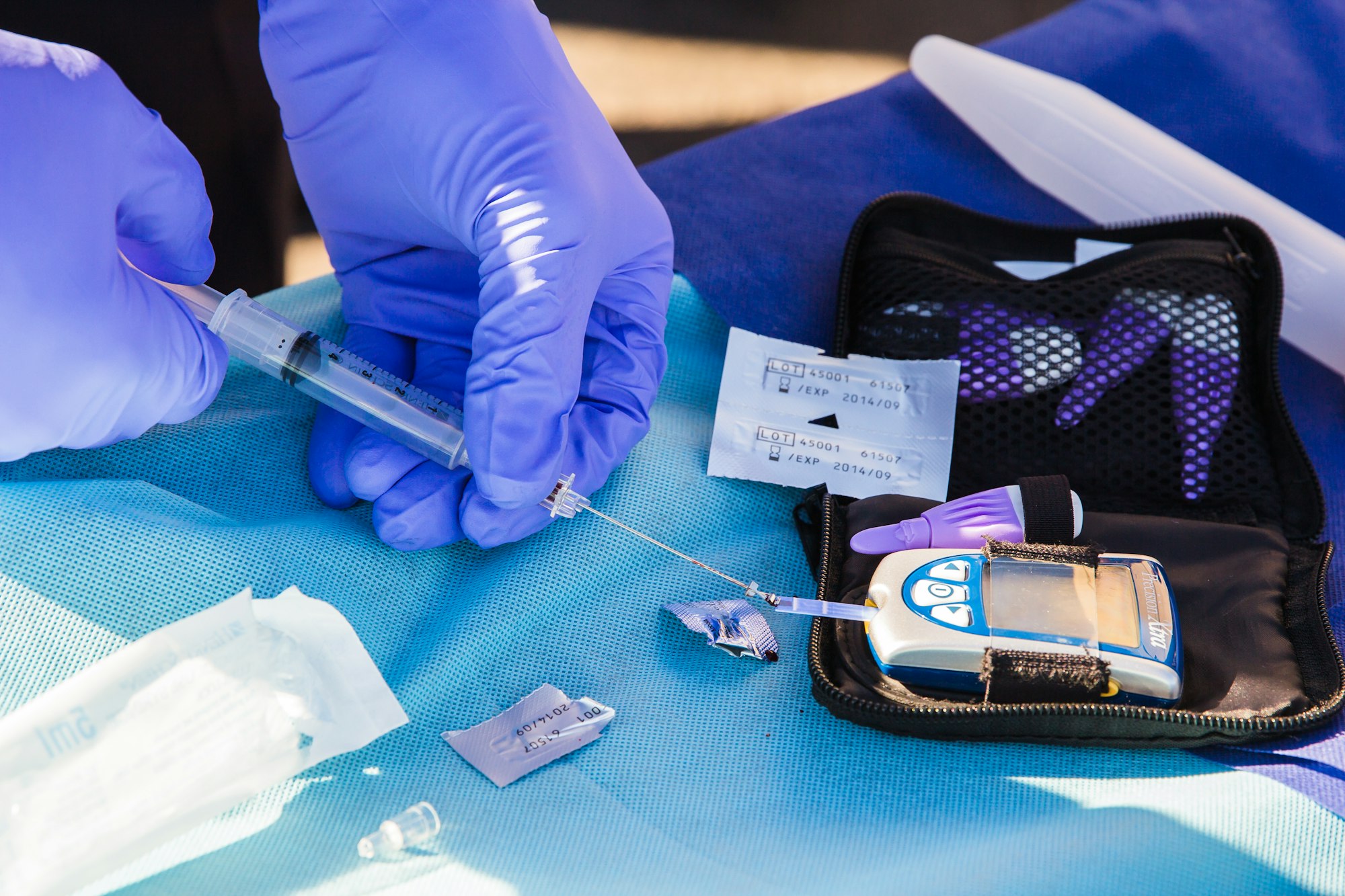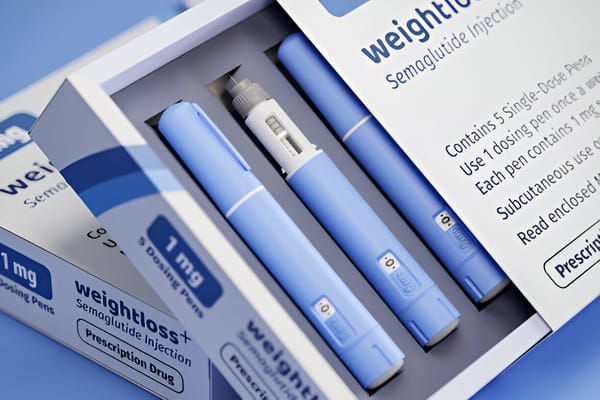Tirzepatide vs Ozempic: A Detailed Analysis of Diabetes and Weight Loss Treatments in 2024
Explore a comprehensive comparison between tirzepatide and Ozempic, two groundbreaking treatments for type 2 diabetes and obesity. Learn about their mechanisms, clinical outcomes, side effects, and future potential.

Since their release, tirzepatide and Ozempic (semaglutide) have emerged as revolutionary treatments for type 2 diabetes and obesity, with effects on both blood glucose regulation and weight management. While Ozempic—a GLP-1 (glucagon-like peptide-1) receptor agonist developed by Novo Nordisk—targets a single pathway, tirzepatide, created by Eli Lilly, operates as a dual agonist of both GLP-1 and GIP (glucose-dependent insulinotropic polypeptide) receptors. This article delves into the biological mechanisms, comparative clinical efficacy, side effect profiles, market impacts, and ongoing research shaping these two contenders in metabolic health.

Biological Mechanisms
GLP-1 is an incretin hormone secreted in the gut after eating, with key roles in glucose regulation. It enhances insulin secretion, suppresses glucagon release (thus reducing glucose production from the liver), delays gastric emptying to moderate post-meal blood sugar levels, and influences appetite through the hypothalamus, promoting a sense of fullness.
Ozempic, a GLP-1 agonist, leverages these actions to improve blood sugar control and facilitate modest weight loss. These mechanisms make Ozempic an effective choice for those needing both glucose and weight management support, though its impact remains limited to the GLP-1 pathway alone.

Tirzepatide’s unique approach lies in its dual activation of GLP-1 and GIP receptors, introducing the concept of “twincretin” therapy. While GLP-1 enhances insulin secretion and reduces appetite, GIP (another incretin hormone) boosts insulin secretion during meals and, when combined with GLP-1 agonism, appears to support fat metabolism and energy expenditure.
Tirzepatide’s dual mechanism amplifies glucose and weight-loss effects, providing metabolic advantages not typically achieved by GLP-1 agonism alone. This dual action influences both caloric intake and energy output, a biological synergy that may explain tirzepatide’s superior results in weight loss and glucose management.
Comparative Clinical Efficacy
In the SURPASS clinical trials, researchers evaluated tirzepatide’s efficacy in adults with type 2 diabetes across different dosages and settings:
- SURPASS-1: Adults whose diabetes was inadequately controlled by diet and exercise alone received tirzepatide (5 mg, 10 mg, or 15 mg) or a placebo. Over 40 weeks, tirzepatide lowered A1C by 1.87–2.07% and reduced weight by 7–9.5 kg compared to the placebo group.
- SURPASS-2: Comparing tirzepatide with semaglutide, tirzepatide lowered A1C more (2.01–2.3% vs. 1.86%) and led to greater weight loss (up to 5.5 kg).
- SURPASS-3: Tirzepatide was compared to insulin degludec in participants inadequately managed with metformin. After 52 weeks, tirzepatide showed superior A1C reductions and weight loss.
- SURPASS-4: Participants with cardiovascular risks received either tirzepatide or insulin glargine. Tirzepatide showed better A1C and weight reduction over 52 weeks.
- SURPASS-5: For those already on insulin glargine, tirzepatide as an add-on lowered A1C and increased weight loss more than the placebo over 40 weeks.
Across trials, tirzepatide consistently showed superior A1C and weight reduction outcomes compared to other treatments.
Weight loss has become a critical outcome for both medications, especially as weight loss options extend beyond diabetes care. In the SURMOUNT trials, tirzepatide demonstrated up to a 22.5% reduction in baseline weight—significantly higher than Ozempic’s approximately 15% reduction at its highest doses (in the form of Wegovy, another version of semaglutide approved specifically for weight management). This difference suggests tirzepatide’s dual mechanism might offer a more potent solution for patients seeking extensive weight reduction.
Both medications show lasting effects over months when adherence is consistent, but tirzepatide has displayed greater durability in weight loss outcomes, potentially due to the dual agonism’s impact on fat metabolism. Long-term comparative data is still emerging, yet both drugs maintain lower HbA1c and weight levels over extended use periods, positioning them as dependable options in chronic metabolic management.
The side effect profiles of tirzepatide and Ozempic share similarities but differ in severity due to tirzepatide’s dual-action mechanism.
Both drugs are commonly associated with nausea, vomiting, and diarrhea, symptoms typically mitigated over time as the body adapts. However, tirzepatide may present slightly higher gastrointestinal side effects due to its dual action, particularly at higher doses. Many patients report tolerating Ozempic slightly better, especially at maintenance doses, though individual experiences vary.
No substantial differences have been observed in severe side effects, including cardiovascular risks, though longer-term tirzepatide safety data remains under evaluation. Both drugs are generally considered safe when prescribed and monitored by healthcare providers.
Market Dynamics and Supply Challenges
The FDA has resolved the shortage of tirzepatide, known by brand names like Mounjaro and Zepbound, and it is now fully available in the U.S. This change follows a challenging period since December 2022, when tirzepatide's limited supply had allowed compounding pharmacies to create alternatives to meet high patient demand. With the shortage officially over, these pharmacies are now restricted from compounding tirzepatide products, requiring patients to access the FDA-approved versions directly. However, this change may impact patients who had relied on compounded versions, potentially leading to prescription transitions and issues with costs or availability.
Additionally, some groups are challenging the FDA’s decision. The Alliance for Pharmacy Compounding (APC), for example, has raised concerns that removing compounded options could affect patients who might face difficulties obtaining or affording the FDA-approved versions of tirzepatide in the immediate future.
Pricing and Insurance
The costs of both medications are high, with tirzepatide potentially more cost-effective due to its dual-target mechanism. Insurance generally covers these drugs for diabetes but varies significantly for weight loss, a gap often leaving patients with high out-of-pocket costs. With further FDA approvals, increased insurance coverage could boost accessibility, though price remains a critical consideration for many patients.
Tirzepatide’s efficacy in both glucose control and weight loss has created competitive pressure on Novo Nordisk, pushing the company to explore multi-receptor agonist options that might replicate tirzepatide’s dual-action benefits. Novo Nordisk’s focus on expanding GLP-1 research reflects the potential for future drugs that address metabolic disorders as comprehensively as tirzepatide.
Future Prospects and Research
Eli Lilly is expanding tirzepatide’s application, conducting trials to investigate its effects on pre-diabetes, nonalcoholic fatty liver disease (NAFLD), and cardiovascular health. Positive outcomes in these areas could redefine tirzepatide’s role in metabolic health, moving beyond diabetes and obesity to offer more holistic benefits.
The choice between tirzepatide and Ozempic increasingly relies on individual treatment goals, such as the need for intensive weight loss or lower tolerance to side effects. As multi-agonist drugs like tirzepatide set a new standard, future therapies may focus on targeting multiple metabolic pathways to provide tailored solutions for diverse patient populations.
Long-Term Impact on Obesity and Metabolic Disorders
Tirzepatide’s success emphasizes a shift toward dual and multi-target drugs for comprehensive metabolic care. The therapeutic promise of targeting multiple metabolic receptors is reshaping obesity and diabetes treatment, with tirzepatide setting a precedent for innovation in these fields.
Conclusion
Tirzepatide and Ozempic represent the pinnacle of metabolic therapies, each with unique mechanisms, clinical outcomes, and potential applications. Tirzepatide’s dual agonism offers a novel approach with amplified benefits in both glycemic control and weight loss, making it an attractive choice for patients needing intensive metabolic support. Ozempic, backed by established efficacy and patient familiarity, continues to be a powerful option, particularly for those requiring steady blood glucose management with moderate weight loss.
In the evolving landscape of metabolic health, tirzepatide’s dual-receptor approach sets a new benchmark for future treatments, pushing boundaries in personalized medicine and the long-term management of diabetes and obesity.
Sources
- Usui R, Yabe D, Seino Y. Twincretin as a potential therapeutic for the management of type 2 diabetes with obesity. J Diabetes Investig. 2019 Jul;10(4):902-905. doi: 10.1111/jdi.13005. Epub 2019 Feb 15. PMID: 30637966; PMCID: PMC6626965.
- Lingvay I, Cheng AY, Levine JA, Gomez-Valderas E, Allen SE, Ranta K, Torcello-Gómez A, Thieu VT. Achievement of glycaemic targets with weight loss and without hypoglycaemia in type 2 diabetes with the once-weekly glucose-dependent insulinotropic polypeptide and glucagon-like peptide-1 receptor agonist tirzepatide: A post hoc analysis of the SURPASS-1 to -5 studies. Diabetes Obes Metab. 2023 Apr;25(4):965-974. doi: 10.1111/dom.14943. Epub 2022 Dec 27. PMID: 36514843.
- Lilly's tirzepatide delivered up to 22.5% weight loss in adults with obesity or overweight in SURMOUNT-1 | https://investor.lilly.com/news-releases/news-release-details/lillys-tirzepatide-delivered-225-weight-loss-adults-obesity-or
- Jung HN, Jung CH. The Upcoming Weekly Tides (Semaglutide vs. Tirzepatide) against Obesity: STEP or SURPASS? J Obes Metab Syndr. 2022 Mar 30;31(1):28-36. doi: 10.7570/jomes22012. PMID: 35314521; PMCID: PMC8987449.
- Tirzepatide Shortage Resolved | https://natlawreview.com/article/tirzepatide-shortage-resolved
- Mody R, Valentine WJ, Hoog M, Sharland H, Belger M. Tirzepatide 10 and 15 mg vs semaglutide 2.0 mg: A long-term cost-effectiveness analysis in patients with type 2 diabetes in the United States. Journ of Manag Care & Special Pharm. 30 (2)2024. Doi: 10.18553/jmcp.2024.30.2.153







